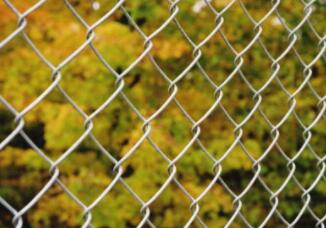The Versatility and Applications of Perforated Stainless Steel Strips
Perforated stainless steel strips are increasingly gaining popularity in various industries due to their unique characteristics and versatility. These strips, made from high-quality stainless steel and featuring a series of holes or perforations, offer a combination of strength, durability, and aesthetic appeal. This article explores the properties, manufacturing processes, and a wide range of applications of perforated stainless steel strips.
Properties of Perforated Stainless Steel Strips
One of the most outstanding features of perforated stainless steel strips is their resistance to corrosion. Stainless steel is an alloy primarily composed of iron, carbon, and chromium, which provides exceptional resistance to rust and corrosion. This makes it ideal for use in environments that may be exposed to moisture, chemicals, or extreme temperatures. Furthermore, the perforations enhance the strip's lightweight nature without compromising its structural integrity.
In addition to corrosion resistance, perforated stainless steel strips offer excellent aesthetic qualities. These strips can be finished in various ways, including polished, brushed, or painted, allowing them to contribute to the overall design of any project. Their unique patterns can add an element of sophistication while serving a functional purpose.
Manufacturing Processes
The manufacturing of perforated stainless steel strips involves several key steps. The first step is selecting the appropriate gauge and grade of stainless steel. This decision is vital, as different grades offer varying levels of strength and corrosion resistance depending on the intended application.
Once the material is selected, the next step is the perforation process. This can be achieved through various methods, including mechanical punching, laser cutting, or water jet cutting. Each method has its advantages and can create different hole shapes, sizes, and patterns, offering flexibility in design to meet specific customer needs.
perforated stainless steel strip

After the perforation, the strips go through additional processes such as finishing and coating, ensuring that they have the desired appearance and surface quality. The result is a high-performance product that meets stringent quality standards.
Applications of Perforated Stainless Steel Strips
Perforated stainless steel strips are used across many sectors. One of the most common applications is in construction and architecture. These strips serve various purposes, such as facade panels, railing infills, and decorative elements, allowing for both functionality and aesthetic appeal. The perforations can facilitate airflow and light penetration, enhancing the overall design of buildings while also promoting energy efficiency.
In the manufacturing industry, these strips are frequently used in filtration systems. Their ability to provide structural support while allowing liquids or gases to pass through makes them ideal for applications such as filters in HVAC systems, water treatment plants, and food processing facilities.
Additionally, the automotive and aerospace industries utilize perforated stainless steel strips for their lightweight and strong properties. These strips can be found in various components such as grilles, engine covers, and interior trim, contributing to both performance and design.
Another noteworthy application is in the creation of arts and crafts. Artists and designers are increasingly using perforated stainless steel strips to create unique sculptures, installations, and functional art pieces. The interplay of light and shadow through the perforations adds depth and texture to their work.
Conclusion
In conclusion, perforated stainless steel strips are an innovative material with diverse applications across multiple industries. Their unique characteristics, including corrosion resistance, strength, and aesthetic appeal, make them an excellent choice for various projects. As technology continues to evolve, the manufacturing processes and applications of these strips will likely expand further, making them a staple material in modern design and engineering. Whether in architecture, manufacturing, or art, the versatility of perforated stainless steel strips is poised to leave a lasting impact on various fields.

















